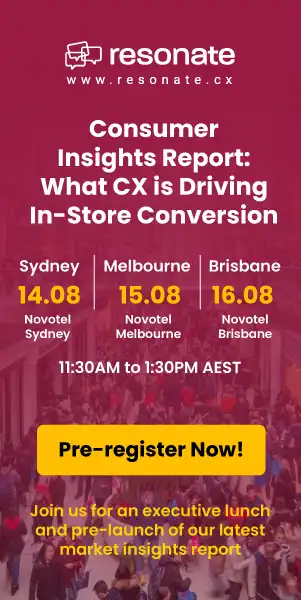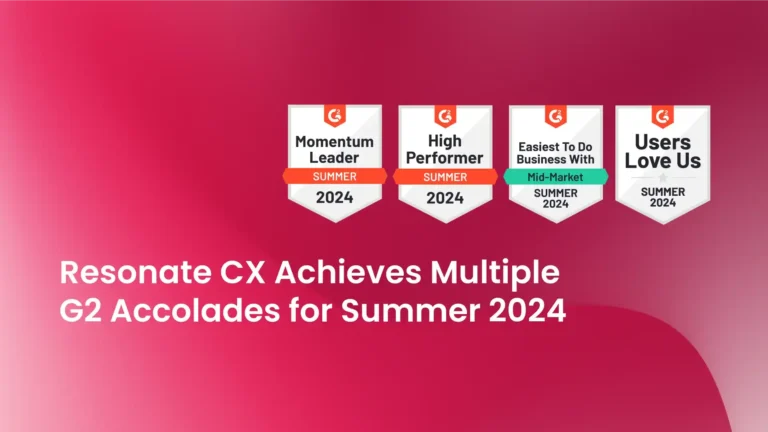In today’s fast-paced and competitive business landscape, success hinges not merely on intuition or blind luck, but on the relentless pursuit of customer satisfaction. Here’s the quite unpopular yet highly effective business strategy: customer feedback. In this digital age, where consumer voices resonate across different channels like thunderbolts in a storm, businesses stand at a pivotal crossroads. They can either harness the power of customer feedback as a potent catalyst for growth or risk sinking into the abyss of irrelevance.
Imagine this: you spend months crafting the perfect product, pouring your heart and soul into every detail. You launch it with fanfare, only to be met with…crickets. Or worse, a chorus of boos.
Ouch. That’s the harsh reality of businesses that ignore the voice of the customer. Here’s the truth: customers are sometimes brutally honest (and sometimes vague) at articulating exactly what they want. But that doesn’t mean they don’t have valuable insights.
That’s why businesses should pay attention to the whispers and roars of their customers. It is the unparalleled insights that customer feedback affords. Customer feedback acts as a guiding light, illuminating the path towards product perfection and service superiority.
Customer Feedback: A Gold Mine for Insights
Customer feedback is the gold mine hiding in plain sight. It’s the customer whispering (or sometimes shouting) your product’s blind spots, its weaknesses, and even its hidden potential. By listening closely, you can unearth a treasure trove of information that will transform your business.
Think of it like this:
- Feedback is your product’s GPS. It steers you in the right direction, helping you avoid dead ends and roadblocks (think confusing interfaces or useless features).
- Feedback is your secret weapon. It reveals what features resonate with customers and which ones leave them scratching their heads. This intel lets you refine your product and outshine the competition.
- Feedback is a love letter (sometimes a hate letter). Positive feedback fuels innovation, while negative feedback identifies areas for improvement. Both are crucial for building a product your customers truly love.
Indeed, the value of customer feedback transcends mere metrics and statistics; it is the lifeblood of innovation, the compass that steers businesses towards the shores of success. With each review, rating, and remark, businesses glean invaluable nuggets of wisdom, unearthing pain points, desires, and aspirations buried within the minds of their clientele.
Methods for Collecting Customer Feedback
Customer feedback is the key to product nirvana. But how do you actually unlock this treasure trove of insights? Let’s explore the following ways to collect customer feedback:
Surveys
Surveys are the cornerstone of any customer feedback strategy. Their versatility allows you to gather a wealth of data, from broad customer satisfaction to specific pain points within your product or service. Whether you cast a wide net with online surveys, target specific interactions with email surveys, or capture in-the-moment feedback with in-app options, surveys provide a powerful toolbox to unlock valuable customer insights.
1. Online Surveys: The Versatile Workhorse
Think of online surveys as the Swiss Army Knife of feedback collection. They’re easy to create, distribute (think social media posts or email blasts), and analyze. Plus, they offer a healthy mix of question formats – multiple choice, open ended, and even rating scales – letting you gather both quantitative and qualitative data.
Pro Tip: Keep it concise! No one enjoys a 20-minute survey marathon. Focus on 3-5 key questions that get straight to the heart of your product’s strengths and weaknesses.
2. Email Surveys: The Targeted Approach
Laser focus your feedback with targeted email surveys. These are perfect for following up after a specific interaction (like a purchase or a support request). They allow you to tailor questions to that particular touchpoint, giving you more granular insights.
For Example: After a customer makes a purchase, you could send a survey asking about their experience with the checkout process.
Pro Tip: Don’t be a pest. Make sure your emails are concise and offer an incentive for completing the survey (like a discount code).
3. In-App Surveys: The Feedback Ninja
Want to catch customer sentiment in the red-hot moment of using your product? In-app surveys are your secret weapon. These bite-sized surveys appear unobtrusively within your app, allowing you to pinpoint exactly where users might be facing friction.
For Example: An in-app survey might pop up after a user abandons their shopping cart, asking why they decided not to complete the purchase.
Pro Tip: Use in-app surveys sparingly to avoid annoying users. Focus on critical moments in the user journey where feedback is most valuable.
Key Tips on Surveys
Surveys are great, but what if you could squeeze even more juice out of your customer interactions? Then you’d need to think about what popular metrics to use and when to send these surveys:
NPS (Net Promoter Score) Surveys: A Metric Gauging Loyalty in a Flash
The NPS score is a one-question wonder that packs a punch. It’s a popular survey metric that asks customers how likely they are to recommend your product or service to others (on a scale of 1-10). Simple, right? But the magic lies in what it reveals:
- Promoters (scores 9-10): Your biggest fans! Identify them and understand what makes them love your product.
- Passives (scores 7-8): Satisfied but not raving. Find out what would push them to become promoters.
- Detractors (scores 0-6): Uh oh. These are your unhappy customers. Their feedback is crucial for identifying areas for improvement.
Pro Tip: NPS surveys are most effective when sent regularly (think quarterly) to track changes in customer sentiment over time.
By combining surveys with strategic follow-up emails, you can paint a complete picture of the customer experience.
Feedback Requests After Interactions: The Personalized Touch
Imagine this: a customer just finished interacting with your support team. Did they leave feeling like a superhero, or were they left stranded on a deserted island of frustration? A well-timed survey lets you find out. This is the golden moment to strike with a personalized email/message requesting feedback.
Here’s the magic:
- Personalization goes a long way. A simple “Hey [Customer Name]” can make a world of difference.
- Specificity is key. Tailor your questions to the specific interaction they just had. Did they get help with a technical issue? Ask about their experience with the support team. Just make a purchase? See how smooth the checkout process was.
- Keep it short and sweet. Don’t overwhelm them with a novel. A couple of well-crafted questions are all you need.
Pro Tip: Find the right balance of personalizing your emails and still making it sound professional. Mention the specific interaction and ask targeted questions about the customer’s experience. This shows you care and encourages thoughtful responses.
Social media monitoring
Let’s face it, social media isn’t just for cat videos and celebrity gossip (although, we can’t deny the entertainment value). It’s also a treasure trove of unfiltered customer feedback. Here’s how to tap into this goldmine:
1. Analyzing Customer Sentiment: Decoding the Social Buzz
Social media platforms are like beehives buzzing with customer chatter. But how do you decipher all that noise? Sentiment analysis tools can be your secret weapon. These clever platforms sift through social media posts, comments, and mentions, identifying positive, negative, and neutral sentiment towards your brand.
Imagine this:
- You see a spike in negative mentions. Dig deeper and discover customers are frustrated with a recent product update. Bingo! Valuable feedback you can use to address the issue and prevent future meltdowns.
- You uncover a flurry of positive tweets raving about your new feature. Time to capitalize on this momentum! Share the love and highlight customer testimonials to generate even more buzz.
2. Responding to Customer Feedback on Social Media: Engagement is Key
Social media is a two-way street. Don’t just listen, engage! Here’s how to respond to customer feedback effectively:
- Acknowledge all feedback, both positive and negative. A simple “thank you” for a compliment shows you care. For negative feedback, apologize for the issue and outline how you’ll address it.
- Be prompt with your response. Social media moves fast. Aim to respond to comments and messages within 24 hours to show you’re listening.
- Be human! Avoid robotic, canned responses. Inject some personality into your interactions and build rapport with your customers.
By mastering the art of social media listening and responding, you can turn frustrated customers into brand advocates and leverage positive sentiment to spread the word about your product or service.
Website Analytics
Your website is a goldmine of customer feedback, but it whispers, not shouts. That’s where website analytics come in. These tools act like website detectives, meticulously tracking user behavior and uncovering hidden insights. Here’s how to leverage their power:
1. Tracking User Behavior: Decoding the Clickstream
Imagine this: you see a high bounce rate on a specific product page. Website analytics can tell you why. They track user clicks, scrolls, and even mouse movements, revealing where users are getting lost or frustrated.
For Example: Maybe users are abandoning the page because they can’t find the “Add to Cart” button. Armed with this knowledge, you can improve the page layout and make the buying process smoother.
2. Identifying Areas for Improvement Based on User Data: Data-Driven Decisions
Website analytics go beyond basic click tracking. They offer a treasure trove of data points like:
- Heatmaps: Reveal where users are focusing their attention on your website. Are they fixated on a specific area? This could indicate a confusing element or a hidden gem that users love.
- Session recordings: Let you literally watch users navigate your website. See firsthand where they encounter friction or confusion, allowing you to identify areas for improvement.
By deciphering the data whispers of your website, you can identify unseen roadblocks and optimize your site for a smooth, frustration-free user experience. This, in turn, translates to happier customers and potentially, a boost in conversions.
Customer Interviews
Website analytics are fantastic, but they can only tell you part of the story. They reveal what users do, but not necessarily why they do it. That’s where customer interviews come in.
Imagine this: you have a direct line into the minds of your customers. Through in-depth conversations, you can uncover their:
- Needs and desires: What are your customers trying to achieve? What are their biggest frustrations?
- Thoughts on your product: What do they love? What confuses them?
- Unforeseen opportunities: Customer interviews can spark new ideas and help you identify opportunities you might have otherwise missed.
Here’s the best part: customer interviews don’t have to be an intimidating in-person affair. You can conduct them remotely via video conferencing or even good old-fashioned phone calls.
Pro Tip: The key to a successful interview is asking the right questions. Focus on open-ended questions that encourage elaboration, and listen actively to uncover the deeper meaning behind their responses.
By incorporating customer interviews into your feedback arsenal, you can move beyond website clicks and gain a richer understanding of your customer base. This deeper knowledge will fuel smarter product development decisions and propel your business to new heights.
Website Feedback Widgets
Surveys are great, but what if you want to make providing feedback even easier for customers? Enter website feedback widgets – the tiny titans of customer feedback. These unobtrusive buttons or tabs live on your website, allowing customers to share their thoughts with a simple click.
Here’s the beauty of feedback widgets:
- Frictionless Feedback: They remove the hurdle of navigating to a separate survey page. Feedback is literally at your customer’s fingertips.
- Real-Time Insights: Capture feedback in the moment, when it’s fresh in their minds. This can be especially valuable for pinpointing usability issues on specific pages.
- Targeted Feedback: Some widgets allow you to trigger feedback pop-ups based on user behavior. For example, a pop-up might appear after a customer abandons their cart, letting you understand why they didn’t complete the purchase.
Pro Tip: Don’t overwhelm visitors with a barrage of widget prompts. Use them strategically on key pages or after specific interactions, and keep your feedback requests concise and actionable.
Website feedback widgets are a fantastic way to gather quick, bite-sized pieces of feedback that can add valuable data points to your overall customer feedback picture. In the next section, we’ll explore some more traditional methods, like feedback boxes, that can still be surprisingly effective.
Feedback boxes
Website feedback widgets are slick and modern, but don’t underestimate the power of the OG feedback method – the feedback box. These physical boxes in stores or online forms might seem low-tech, but they can still be a treasure trove of honest customer insights.
Here’s why feedback boxes deserve a spot in your arsenal:
- Accessibility for All: Feedback boxes cater to customers who might not be comfortable with digital tools or prefer the simplicity of pen and paper.
- Anonymity Option: Some customers feel more comfortable providing honest feedback anonymously. Feedback boxes can provide that safe space.
- Actionable Insights: While not as detailed as interview data, feedback boxes can still surface common themes and pain points that warrant investigation.
Pro Tip: Craft clear and concise prompts that encourage customers to leave specific feedback. For example, instead of a generic “How can we improve?”, ask “What was the most frustrating part of your shopping experience today?”
Remember, feedback boxes are most effective when placed strategically. In physical stores, position them near exits or checkout counters. For online forms, embed them on relevant pages or after key interactions.
By embracing both the new and the tried-and-true, you can create a comprehensive customer feedback system that captures insights from every corner of your customer base. In the next section, we’ll explore some additional methods for collecting customer feedback, giving you a well-rounded toolkit to transform your business.
Other methods
Surveys, social media monitoring, website analytics – these are the cornerstones of customer feedback collection. But there’s a treasure trove of insights waiting to be unearthed beyond these core methods. Let’s explore three additional techniques to supercharge your feedback game:
User Testing: Watching Makes Perfect
Imagine this: you observe real users interacting with your product or website. You see their struggles, their “aha” moments, and everything in between. This is the magic of user testing.
Here’s the power play:
- Uncover Usability Issues: Watch users navigate your product and identify any confusing elements or clunky functionalities.
- Gain Real-World Insights: User testing provides a more realistic picture of how users interact with your product compared to data-driven methods.
- Test Different Variations: Use user testing to compare different prototypes or design variations and see which one resonates best with your target audience.
A/B Testing: The Data Duel
A/B testing lets you put your hunches to the test. Here’s the gist: you create two slightly different versions of a webpage, email, or ad (version A and version B), and then show them to different segments of your audience. The version that performs better wins!
How it fuels feedback:
- Data-Driven Decisions: A/B testing removes guesswork from the equation. You see concrete data on what resonates with your audience.
- Test Everything: From headlines to CTAs, A/B testing allows you to experiment with different elements and identify what drives conversions.
- Continuous Improvement: A/B testing is an iterative process. Use the learnings from each test to refine your product or marketing efforts.
Focus Groups: Groupthink for Good
Focus groups bring together a small group of target customers for a moderated discussion about your product or service. The power lies in the group dynamic:
- Diverse Perspectives: Gain insights from a variety of viewpoints, sparking ideas you might not have considered on your own.
- Uncover Hidden Gems: Focus groups can unearth unexpected needs and desires that traditional surveys might miss.
- Fuel Innovation: The energy and interaction within a focus group can spark creative ideas for product development or marketing campaigns.
By incorporating these additional methods alongside the core feedback techniques explored earlier, you can paint a well-rounded picture of your customer base and use those insights to continuously improve your product or service. In the next section, we’ll delve into the crucial art of analyzing and acting on your hard-won customer feedback.
Choosing the Right Method
Alright, you’re armed with a customer feedback arsenal that would make James Bond jealous. But hold on before you unleash a barrage of surveys and social media monitoring. The key to unlocking truly valuable insights lies in choosing the right tool for the job.
In this section, we’ll break down the factors to consider when selecting your feedback method, ensuring you gather the most actionable data to propel your business forward. We’ll cover everything from aligning your goals with the best techniques to tailoring your approach to your target audience and resource limitations. By following this battle plan, you’ll be well on your way to cracking the customer code and transforming your business into a feedback-fueled machine.
Goals of Feedback Collection
- Uncover broad customer sentiment: Surveys (online, email, in-app) and social media monitoring are excellent choices for getting a general sense of customer satisfaction.
- Gather in-depth insights: Customer interviews and focus groups allow you to delve deeper into user needs, motivations, and pain points.
- Identify usability issues: User testing and website analytics help pinpoint specific areas of your product or website that might be causing friction.
- Track changes over time: NPS surveys are a great way to measure customer loyalty and satisfaction on a recurring basis.
Target Audience
- Tech-savvy audience: Online surveys, in-app feedback, and website feedback widgets are all convenient options for this demographic.
- Offline audience: Feedback boxes in physical stores or paper surveys distributed through mail can be effective for reaching customers who might not be digitally active.
- Specific customer segments: Tailor your approach! Use targeted email surveys or social media listening to gather feedback from specific customer groups.
Resources Available
- Limited resources: Simple online surveys, social media monitoring, and feedback boxes are cost-effective ways to collect valuable feedback.
- More resources available: Consider investing in user testing tools, A/B testing platforms, or conducting focus groups for richer insights.
Frequency and Time Period
- Single Instance: This type of feedback collection is often detailed and extensive, typically distributed only a few times over a specified period. These are ideally done during focus group discussions or one-off long surveys.
- Ongoing: Such surveys are usually integrated with your Customer Relationship Management (CRM) system, enabling automatic and continuous feedback collection after every transaction.
Remember, the key is to use a combination of methods to get a well-rounded view of your customer base. Don’t be afraid to experiment and see what works best for your business. In the next section, we’ll explore how to transform that hard-won customer feedback into actionable insights.
From Feedback to Finish Line: Analyzing and Taking Action
You’ve cast your feedback net and reeled in a treasure trove of insights. But here’s the thing: a pile of data is only potential gold. The true magic happens when you analyze it and transform it into actionable improvements. Here’s how to turn feedback into a springboard for success:
Analyze to Uncover the Gems
Don’t let your feedback become a data graveyard. Here’s how to unearth the hidden treasures:
- Identify Themes: Look for patterns and recurring issues across different feedback channels. Are there usability problems plaguing your website? Are customers consistently frustrated with a particular aspect of your service?
- Quantify When Possible: While not all feedback lends itself to numbers, use quantitative data to support qualitative insights. For example, track the frequency of mentions of a specific pain point in social media comments.
- Prioritize Based on Impact: Not all feedback is created equal. Focus on addressing issues that will have the biggest impact on customer satisfaction and business growth.
Use tools for efficiency
Don’t get lost in the weeds! Take a step back and look for recurring themes across your various feedback channels. Here are some tools to help you sift through the data:
- Sentiment Analysis Tools: These can categorize feedback as positive, negative, or neutral, giving you a quick grasp of overall customer sentiment.
- Text Analysis Software: These fancy programs can identify keywords and phrases that frequently pop up, revealing areas of common praise or concern.
- Spreadsheets and Project Management Tools: Even a simple spreadsheet can be a powerful tool for organizing and analyzing feedback data.
From Insights to Action
Once you’ve identified key themes, prioritize them based on impact and feasibility. Here’s how to translate insights into action:
- Product Roadmap: Integrate customer feedback into your product roadmap. Are there recurring feature requests that resonate with a large segment of your audience? Prioritize these in your development cycle.
- Quick Fixes: Address low-hanging fruit first. Can you tweak website copy based on user feedback? Easy fixes show customers you’re listening and responsive.
- Implement Improvements: Based on your analysis, prioritize changes to your product, service, or website. This could involve anything from fixing a bug to revamping an entire feature set.
- Track the Results: Did your changes have the desired effect? Monitor key metrics to see if your feedback-driven improvements are translating into happier customers and a thriving business.
- A/B Test It!: Don’t just guess what works best. Use A/B testing to compare different solutions based on customer feedback and see what drives the most positive results.
Communicating with Customers: Closing the Loop
Let your customers know you heard them! Respond to feedback (both positive and negative) and outline the steps you’re taking to address their concerns. This shows you value their input and builds trust.
Letting your customers know how you’re using their feedback is crucial. Here’s why:
- Shows You Care: A simple “thank you” for their feedback goes a long way.
- Transparency Builds Trust: Communicate how you’re addressing their concerns or implementing their suggestions. This fosters trust and loyalty.
- Keeps the Conversation Going: Let customers know you’re always listening and encourage them to continue providing feedback.
By following these steps, you can transform customer feedback from a data dump into a powerful tool for continuous improvement. Remember, customer feedback is a conversation, not a monologue. Listen actively, take action, and communicate – and watch your business soar.
The Customer Whisperer: Turning Feedback into Business Bliss
Customer feedback isn’t a magical eight-ball predicting your business’s future. But it’s the closest thing you’ll get. By transforming yourself into a customer whisperer, actively collecting and analyzing their insights, you can unlock a treasure trove of knowledge that will propel your business towards success.
Remember, your customers are the ultimate judges. They decide if your product is a game-changer or a dud. By using the feedback arsenal we’ve explored – from online surveys to in-depth interviews – you can gather the intel you need to continuously improve, innovate, and build something customers truly love.
So, ditch the guesswork and embrace the customer feedback loop. Listen closely, analyze ruthlessly, and take action. Because in the end, it’s your customers who will write the story of your business’s success.







